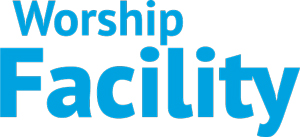What are the best practices that directors should know when they are using a multi camera set up to capture video for an event?
I follow various Facebook groups focused on church and media technology and also sometimes contribute to these. The main reason I follow them is to find out what the difficult issues are that people (like you) are struggling with that I can speak into or help provide some clarity.
Recently, I saw a question on one of these groups that went, “should I cut or dissolve between cameras?” A very good question. I was though surprised by some of the answers, ranging from “I always dissolve” to “cuts only, everything else is amateur”. There were a few people who went into the reasons behind their recommendations which was helpful, but for the most part, they based their answer on what they saw others doing. So, I thought I would do an article on my thoughts on this as someone who has been directing multi camera content for over 20 years. Here then are my three guiding principles about how I direct live multi camera content:
First, I don’t believe there is always a right or wrong answer to this.

Some people will (incorrectly) point out that most “mainstream” broadcasts only ever use cuts and argue that we as the church should do that as well. They claim it’s the most “relevant” style and yet, that seems a simplistic answer and I prefer more nuance.

Second, some will say that the type of content should dictate the type of transition. Slow songs should use dissolves, fast songs and speech use cuts. Again, for me, this seems too simplified and too formulaic. One lesson I have learnt over the years is that formula (while useful) isn’t the right answer.
Third, it’s very important to realize that there isn’t a simple “one size fits all” answer to how we should produce our content. We have to realize that, over time, styles change and we need to change and adapt what we do along with them.
So, using these three principles what is my approach?
Here is my “general” rule of thumb, though I hesitate to offer this. As I stated above, I’m not a fan of formula. Use cuts as the main way to transition between cameras, but use dissolves where they work and they are appropriate. If you ever are in doubt though, then a cut rather than dissolve should be your go-to transition. You need to be able to argue WHY a dissolve is best when you use it and if you don’t know why, then use a cut.
We need to recognise that what we are trying to do is draw viewers into an experience. This must always be our goal. If what we do (cuts or dissolves) become the focus of the viewer and distract them from what is happening, that is our failure. Sometimes a cut can be distracting (particularly if it’s done at the wrong time) and often a dissolve can be as well. We need to put ourselves in the seat of the person watching and deliver our content based on making it as watchable as possible for them. Knowing who you are producing content for will help here. Focusing on what they would like from you is the best way forward. The very worst thing that can happen is a viewer notices what the director is doing. That means they are not engaging with the content and, if that happens, it becomes about us and not them.
If I can encourage you, as you find your way forward in this area, it would be to get you to work out how you can best direct your content in a way that works for your audience. Aim to draw them in and engage them and remove barriers for them to participate in the content. Concentrate on telling a visual story and then you can’t fail.
What do you think – is there a right and wrong answer to the question?

